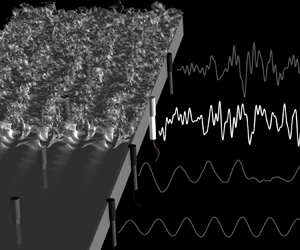Article contents
Observation-infused simulations of high-speed boundary-layer transition
Published online by Cambridge University Press: 16 April 2021
Abstract

High-speed boundary-layer transition is extremely sensitive to the free-stream disturbances which are often uncertain. This uncertainty compromises predictions of models and simulations. To enhance the fidelity of simulations, we directly infuse them with available observations. Our methodology is general and can be adopted with any simulation tool, and is herein demonstrated using direct numerical simulations. An ensemble variational (EnVar) optimization is performed, whereby we determine the upstream flow that optimally reproduces the observations. The cost functional accounts for our relative confidence in the model and the observations, and judicious choice of the ensemble members improves convergence and reduces the prediction uncertainty. We demonstrate our observation-infused predictions for boundary-layer transition at Mach 4.5. Without prior knowledge of the free-stream condition, and using only observations of wall pressure at isolated locations from an independent computation (true flow), all of the relevant inflow disturbances are identified. We then evaluate the entire flow field, beyond the original limited wall observations, and interpret simulations consistently with data and vice versa. Our predicted flow compares favourably to the true ‘unknown’ state, and discrepancies are analysed in detail. We also examine the impact of weighting of observations. Improved convergence of the inverse problem and accuracy of the inflow amplitudes and phases are demonstrated, and are explained by aid of a simple example from two-dimensional unstable, chaotic convection.
- Type
- JFM Papers
- Information
- Copyright
- © The Author(s), 2021. Published by Cambridge University Press
References
REFERENCES
- 14
- Cited by



